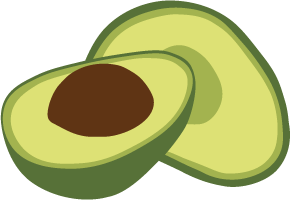ArangoDB v3.4 reached End of Life (EOL) and is no longer supported.
This documentation is outdated. Please see the most recent version here: Latest Docs
Manipulating edges
graph.edgeCollection
graph.edgeCollection(collectionName): GraphEdgeCollection
Returns a new GraphEdgeCollection instance with the given name bound to this graph.
Arguments
-
collectionName:
stringName of the edge collection.
Examples
const db = new Database();
// assuming the collections "edges" and "vertices" exist
const graph = db.graph("some-graph");
const collection = graph.edgeCollection("edges");
assert.equal(collection.name, "edges");
// collection is a GraphEdgeCollection
graph.addEdgeDefinition
async graph.addEdgeDefinition(definition): Object
Adds the given edge definition definition to the graph.
Arguments
-
definition:
ObjectFor more information on edge definitions see the HTTP API for managing graphs.
Examples
const db = new Database();
// assuming the collections "edges" and "vertices" exist
const graph = db.graph('some-graph');
await graph.addEdgeDefinition({
collection: 'edges',
from: ['vertices'],
to: ['vertices']
});
// the edge definition has been added to the graph
graph.replaceEdgeDefinition
async graph.replaceEdgeDefinition(collectionName, definition): Object
Replaces the edge definition for the edge collection named collectionName with the given definition.
Arguments
-
collectionName:
stringName of the edge collection to replace the definition of.
-
definition:
ObjectFor more information on edge definitions see the HTTP API for managing graphs.
Examples
const db = new Database();
// assuming the collections "edges", "vertices" and "more-vertices" exist
const graph = db.graph('some-graph');
await graph.replaceEdgeDefinition('edges', {
collection: 'edges',
from: ['vertices'],
to: ['more-vertices']
});
// the edge definition has been modified
graph.removeEdgeDefinition
async graph.removeEdgeDefinition(definitionName, [dropCollection]): Object
Removes the edge definition with the given definitionName form the graph.
Arguments
-
definitionName:
stringName of the edge definition to remove from the graph.
-
dropCollection:
boolean(optional)If set to
true, the edge collection associated with the definition will also be deleted from the database.
Examples
const db = new Database();
const graph = db.graph('some-graph');
await graph.removeEdgeDefinition('edges')
// the edge definition has been removed
// -- or --
await graph.removeEdgeDefinition('edges', true)
// the edge definition has been removed
// and the edge collection "edges" has been dropped
// this may have been a bad idea
graph.traversal
async graph.traversal(startVertex, opts): Object
Performs a traversal starting from the given startVertex and following edges contained in any of the edge collections of this graph.
Arguments
-
startVertex:
stringThe handle of the start vertex. This can be either the
_idof a document in the graph or a document (i.e. an object with an_idproperty). -
opts:
ObjectSee the HTTP API documentation for details on the additional arguments.
Please note that while opts.filter, opts.visitor, opts.init, opts.expander and opts.sort should be strings evaluating to well-formed JavaScript functions, it’s not possible to pass in JavaScript functions directly because the functions need to be evaluated on the server and will be transmitted in plain text.
Examples
const db = new Database();
const graph = db.graph('some-graph');
const collection = graph.edgeCollection('edges');
await collection.import([
['_key', '_from', '_to'],
['x', 'vertices/a', 'vertices/b'],
['y', 'vertices/b', 'vertices/c'],
['z', 'vertices/c', 'vertices/d']
])
const result = await graph.traversal('vertices/a', {
direction: 'outbound',
visitor: 'result.vertices.push(vertex._key);',
init: 'result.vertices = [];'
});
assert.deepEqual(result.vertices, ['a', 'b', 'c', 'd']);

